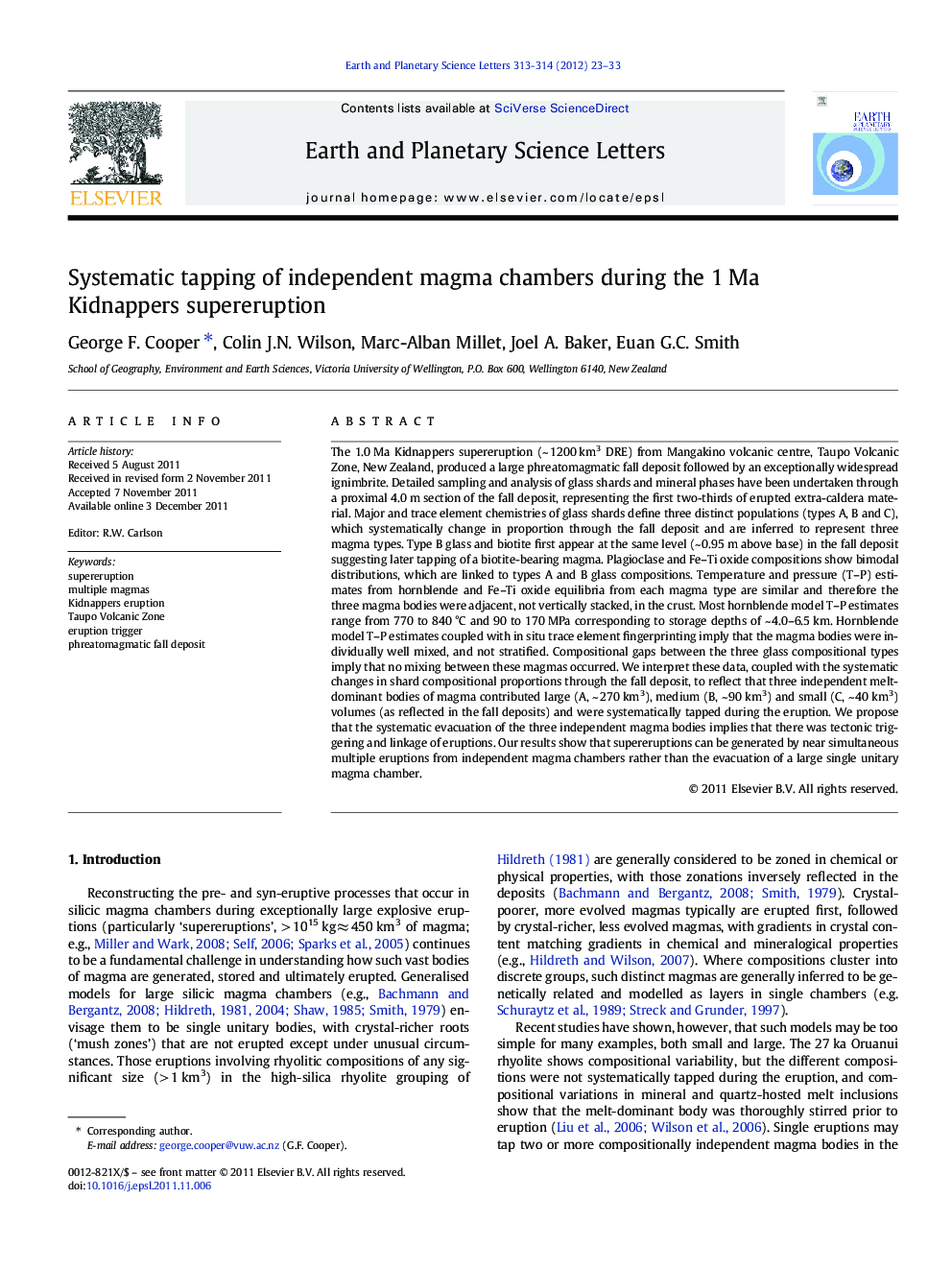| کد مقاله | کد نشریه | سال انتشار | مقاله انگلیسی | نسخه تمام متن |
|---|---|---|---|---|
| 4677664 | 1634814 | 2012 | 11 صفحه PDF | دانلود رایگان |

The 1.0 Ma Kidnappers supereruption (~ 1200 km3 DRE) from Mangakino volcanic centre, Taupo Volcanic Zone, New Zealand, produced a large phreatomagmatic fall deposit followed by an exceptionally widespread ignimbrite. Detailed sampling and analysis of glass shards and mineral phases have been undertaken through a proximal 4.0 m section of the fall deposit, representing the first two-thirds of erupted extra-caldera material. Major and trace element chemistries of glass shards define three distinct populations (types A, B and C), which systematically change in proportion through the fall deposit and are inferred to represent three magma types. Type B glass and biotite first appear at the same level (~ 0.95 m above base) in the fall deposit suggesting later tapping of a biotite-bearing magma. Plagioclase and Fe–Ti oxide compositions show bimodal distributions, which are linked to types A and B glass compositions. Temperature and pressure (T–P) estimates from hornblende and Fe–Ti oxide equilibria from each magma type are similar and therefore the three magma bodies were adjacent, not vertically stacked, in the crust. Most hornblende model T–P estimates range from 770 to 840 °C and 90 to 170 MPa corresponding to storage depths of ~ 4.0–6.5 km. Hornblende model T–P estimates coupled with in situ trace element fingerprinting imply that the magma bodies were individually well mixed, and not stratified. Compositional gaps between the three glass compositional types imply that no mixing between these magmas occurred. We interpret these data, coupled with the systematic changes in shard compositional proportions through the fall deposit, to reflect that three independent melt-dominant bodies of magma contributed large (A, ~ 270 km3), medium (B, ~ 90 km3) and small (C, ~ 40 km3) volumes (as reflected in the fall deposits) and were systematically tapped during the eruption. We propose that the systematic evacuation of the three independent magma bodies implies that there was tectonic triggering and linkage of eruptions. Our results show that supereruptions can be generated by near simultaneous multiple eruptions from independent magma chambers rather than the evacuation of a large single unitary magma chamber.
► A geochemical study through a fall section of the Kidnappers supereruption.
► Three independent magma bodies were near simultaneously tapped during the eruption.
► The evacuation of three independent melt-dominant bodies was systematic.
► Geothermobarometry reveals melt-dominant bodies were adjacent within the crust.
► Tectonic triggering and linkage is proposed to explain the systematic evacuation.
Journal: Earth and Planetary Science Letters - Volumes 313–314, 1 January 2012, Pages 23–33